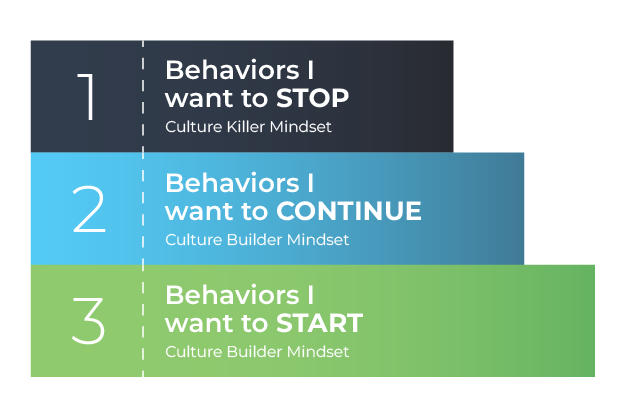Why Leadership Behavior Defines Culture
Leadership behavior is one of the most influential determinants of an organization’s culture. If you’ve ever worked with a leader who doesn’t practice what they preach, you’re familiar with the frustration that comes when leadership modeling is missing. The behaviors leaders choose to demonstrate (or ignore) set the standard for “how things are done here.”
Leaders shape culture not through slogans or speeches, but through daily decisions and interactions. Employees watch where leaders spend their time, how they handle conflict, and what they reward or overlook. If a leader emphasizes accountability but avoids hard conversations, the team learns that comfort matters more than ownership. If a leader consistently recognizes collaboration and curiosity, those behaviors quickly multiply across the organization.
When there is a gap between leaders’ words and actions, misalignment, disengagement, and negative outcomes quickly follow. Even a small gap between company values and leadership behavior will erode trust and alignment.
In short: Leadership behavior is the strongest signal of “how things are done here.” It’s the mirror through which employees understand what the culture truly values.
Questions to Assess Leadership Modeling:
- Do the leaders’ actions match their words?
- Do the leaders use your organization’s core values to guide decisions, communicate priorities, and determine their actions?
- Do the leaders consistently demonstrate the behaviors you expect from everyone else?
- What do leaders regularly talk about, recognize, and reward?
Action Steps to Apply
- Identify 3-5 specific, observable behaviors that represent each of your core values. Share them in training and performance discussions. Watch for them in action and reward them when they occur.
- Conduct 360 feedback surveys at every level in the organization. Review and discuss patterns at the leadership level.
- Tie promotions and bonuses to both results and behavior.
- Address misaligned behavior quickly, even in high performers.
The Culture Killer/Builder Exercise

To help your leaders put these ideas into practice, use the Culture Killer/Builder Exercise as a reflection and accountability tool.
- Stop: Identify the behaviors that undermine your desired culture. These are your culture killers, actions or habits that send mixed messages or erode trust.
- Continue: Highlight the behaviors that already reflect your core values and positively influence culture. These are your culture builders, the actions you want to see more of.
- Start: Determine new behaviors your leaders can adopt to strengthen cultural alignment and reinforce your company’s values in daily decisions and interactions.
This simple stop–continue–start framework keeps expectations visible, helps leaders self-assess, and makes cultural alignment part of every leadership conversation.
When leaders model the right behaviors, culture begins to align naturally. But even the best leadership efforts need something bigger to guide them—a clear, consistent purpose.
Ready to take the next step? Continue your journey by reading Part 2 | Clear and Consistent Purpose: The North Star of Cultural Alignment.
Or, if you’d like to get leadership insights like this delivered straight to your inbox, subscribe to our monthly newsletter for leaders focused on growth, strategy, and culture.






